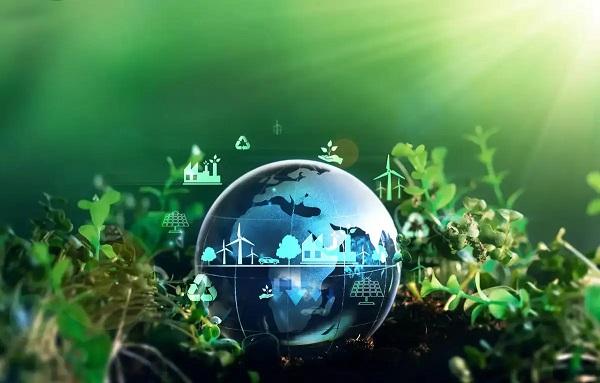
As the global community observes World Earth Day on April 22nd, this annual event transcends mere symbolic commemoration. It serves as a critical juncture, a stark and compelling reminder of humanity’s collective stewardship of our shared planetary ecosystem. For India, a nation characterized by its vast and multifaceted biogeographical endowment, a vibrant tapestry of cultural diversity, and a rapidly evolving economic landscape with aspirations for global leadership, the imperative to deeply internalize the profound significance of this universal clarion call resonates with particular and pressing urgency. This year’s resonant theme, “Our Energy, Our Planet,” underscores the existential necessity to prioritize renewable energy and the indispensable shift towards clean energy generation. India, possessing a remarkable potential in renewable energy resources, finds itself at a pivotal moment, its diverse geography and natural endowments providing a fertile ground for various forms of sustainable energy production. Let us now examine the primary renewable energy resources available within India and their current status.
Solar Power: Harnessing the Solar Irradiation.
India benefits from an average of approximately 300-330 days of abundant solar irradiation annually, positioning it as an ideal locus for photovoltaic energy generation. As of January 2025, the nation’s installed solar power capacity has surpassed the significant milestone of 100GW , with an additional 84.10 GW of projects currently under development. Solar energy constitutes a substantial circa 47% share of India’s total renewable energy portfolio. The states of Rajasthan, Gujarat, Tamil Nadu, Maharashtra, and Madhya Pradesh are at the forefront of solar power deployment. The government actively promotes the establishment of solar parks and the adoption of rooftop solar photovoltaic systems through various supportive policies and incentives.
Wind Power: Exploiting Aeolian Resources
India ranks as the fourth largest globally in terms of installed wind power capacity, a significant achievement in its pursuit of clean energy diversification. By March 2025, the nation’s cumulative installed wind power capacity reached 50 gigawatts. The concentration of wind power potential is primarily observed in the southern, western, and northwestern states. Tamil Nadu, Gujarat, and Maharashtra are key states in wind energy production. The country’s extensive coastline and select mountainous regions offer considerable untapped potential for further harnessing aeolian resources.
Hydropower: Leveraging Hydroelectric Potential
India possesses a substantial capacity for hydropower generation, with 197 large-scale hydroelectric plants operational across the country. The total installed hydropower capacity stands at approximately 46.85 GW , placing India as the fifth largest globally in terms of hydroelectric capacity. Both large impoundment projects and smaller run-of-the-river initiatives play a crucial role in the nation’s energy sector, providing a significant and reliable source of electricity.
Biomass Energy: Utilizing Organic Residues
India boasts a significant availability of agricultural residues, forestry products, and other organic materials, which serve as valuable feedstock for bioenergy conversion. The country generates approximately 308 million tonnes of biomass annually. Technologies for producing electricity and other fuels from biomass are under active development and deployment. The utilization of agricultural waste for biofuel and biogas production is being actively promoted.
Other Renewable Energy Resources: Exploring Nascent Technologies
The potential of other renewable energy sources, such as geothermal and tidal energy, is also being explored within India. However, their commercial-scale deployment remains in the nascent stages. India has set an ambitious target of achieving 500 GW of non-fossil fuel-based energy capacity by 2030. The development and utilization of renewable energy resources are paramount to realizing this objective. The government is providing various incentives and support mechanisms to this burgeoning sector.
Challenges: Addressing Environmental Imperatives
India stands as one of the nations most vulnerable to the adverse impacts of climate change. Rising temperatures, shifting precipitation patterns, and the increasing frequency of extreme weather events pose significant threats to agriculture, water resources, public health, and infrastructure. Water scarcity is a pressing concern across the country, exacerbated by a growing population, agricultural demands, industrialization, and urbanization, leading to depleting groundwater levels and widespread water stress. Air, water, and soil pollution constitute major environmental challenges in India, driven by industrial effluents, vehicular emissions, sewage discharge, and agricultural chemicals, impacting public health and degrading natural ecosystems. Deforestation, often for agricultural expansion, is reducing forest cover, destroying wildlife habitats, and contributing to biodiversity loss. Inadequate waste collection, transportation, and processing infrastructure contribute to environmental pollution and public health risks. The nation’s continued reliance on fossil fuels for a significant portion of its energy needs contributes to climate change and poses risks to energy security. Unsustainable agricultural practices, deforestation, and inefficient water management are leading to land degradation and desertification, impacting agricultural productivity and food security.
Solutions: Formulating Sustainable Strategies
Addressing India’s environmental challenges effectively necessitates a comprehensive and multi-faceted approach. Actions at various levels – individual, societal, governmental, and international – are crucial to overcoming these hurdles. Key potential solutions include a significant augmentation in the production and utilization of clean energy sources such as solar, wind, hydro, and biomass, coupled with a strategic reduction in reliance on fossil fuels. Implementing measures to enhance energy efficiency across residential, industrial, and transportation sectors, along with promoting electric vehicles, public transportation, and cycling, are paramount. Protecting existing forests and undertaking extensive afforestation initiatives are vital for carbon sequestration.
Adopting climate-resilient cropping patterns and water-efficient irrigation techniques, alongside public awareness campaigns on water conservation and the reduction of leaks in water supply systems, are essential. Developing and restoring traditional water bodies, implementing small-scale irrigation projects tailored to local needs, and promoting low water-intensive crops are crucial strategies. Stringent regulation of industrial emissions and vehicular pollution, coupled with the mandatory treatment of industrial effluents and sewage before discharge into water bodies, are necessary. Reducing the use of chemical fertilizers and pesticides while promoting organic farming practices is vital. Minimizing plastic consumption, promoting recycling, and fostering the development of sustainable alternatives are crucial steps. Preventing deforestation and biodiversity loss through strict enforcement of forest conservation laws, combating illegal logging, and promoting social forestry initiatives with community participation are essential.
Protecting wildlife habitats, curbing poaching, and identifying and safeguarding ecologically sensitive zones are critical. Reducing waste generation, promoting reuse, and implementing efficient waste segregation at source for effective processing are necessary. Developing technologies for energy generation from waste and establishing and managing scientific landfill sites are crucial. Integrating environmental conservation into the school curriculum from an early age and utilizing media and other platforms to raise public awareness are vital. Promoting the participation of local communities in environmental protection programs and ensuring the effective enforcement of stringent environmental laws by governments are paramount. Allocating adequate funding for environmental protection and promoting research in sustainable technologies are crucial. Collaborating with other nations to address shared environmental challenges and fostering public awareness are essential. World Earth Day serves as a significant catalyst to galvanize greater efforts in this direction.
A Shared Responsibility: The Imperative for Collective Action
World Earth Day should not be confined to a single day of observance. Environmental protection is an ongoing and continuous process. We must respect our Earth every day and strive to conserve it diligently. The responsibility of providing a healthy and clean environment for our future generations rests squarely upon our shoulders.











